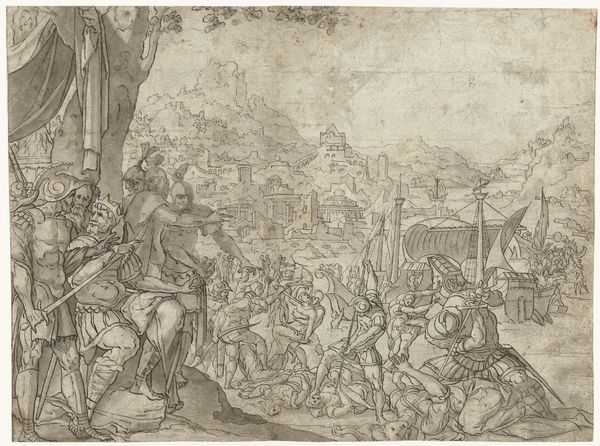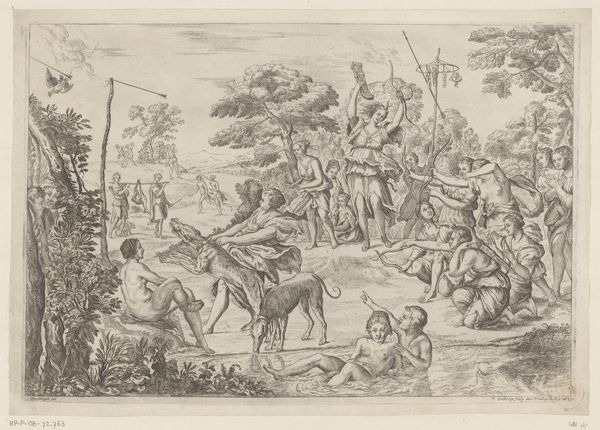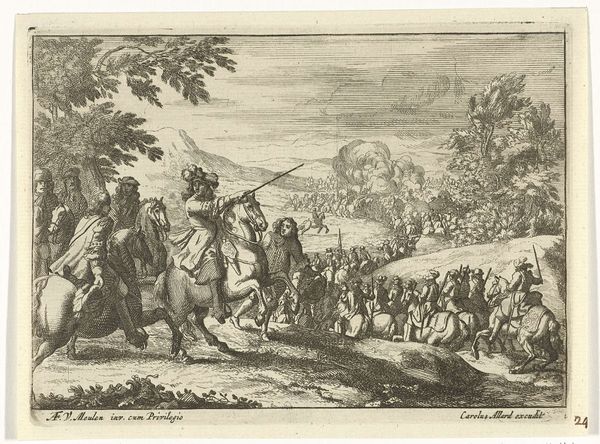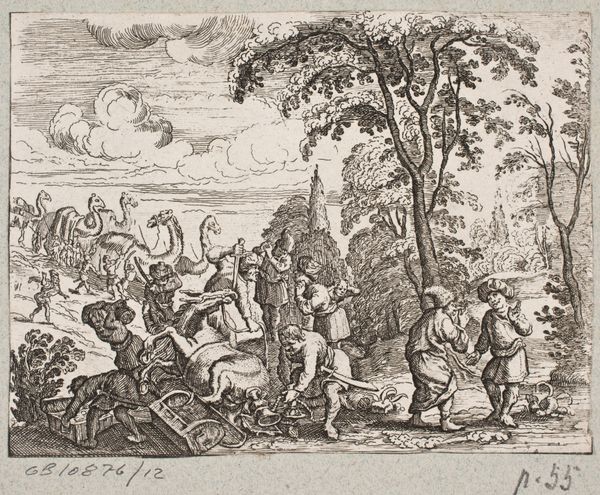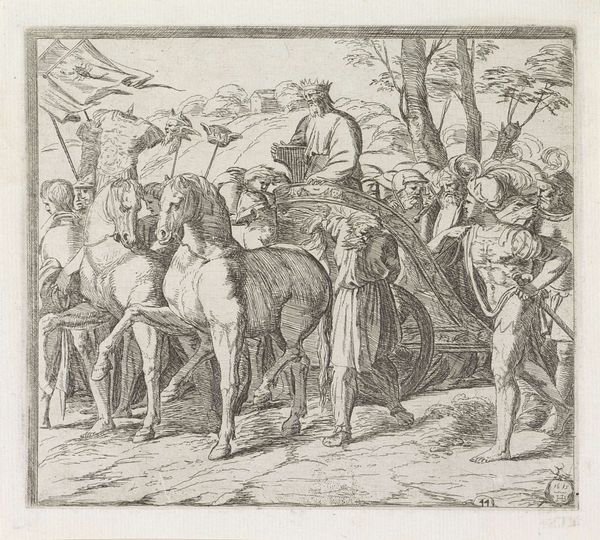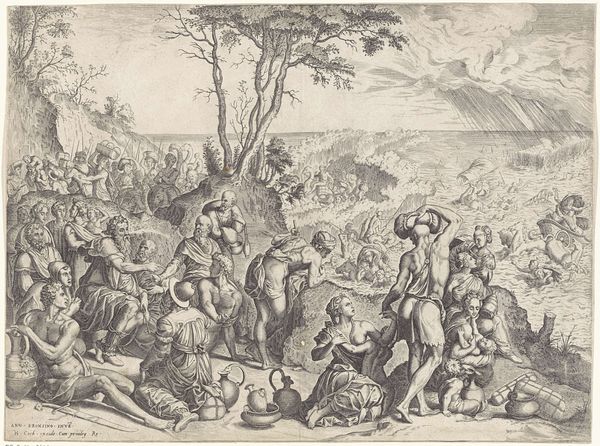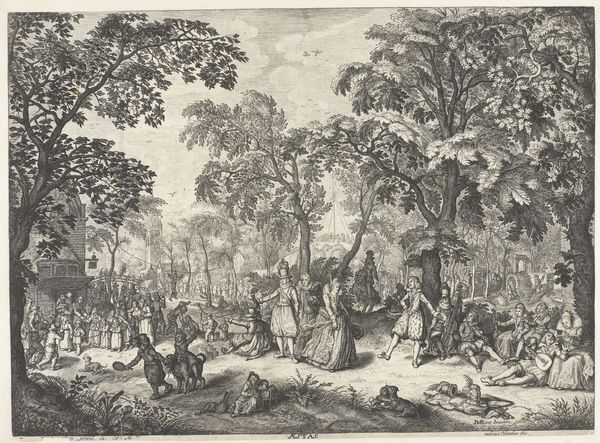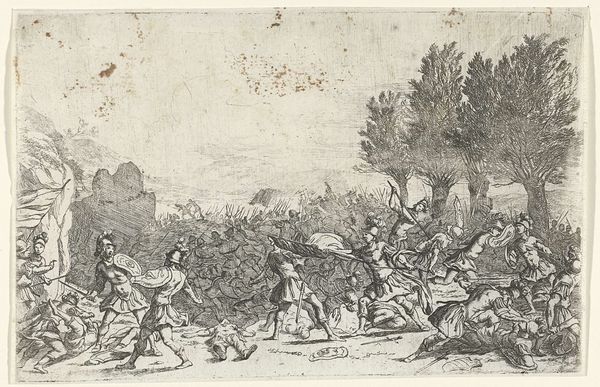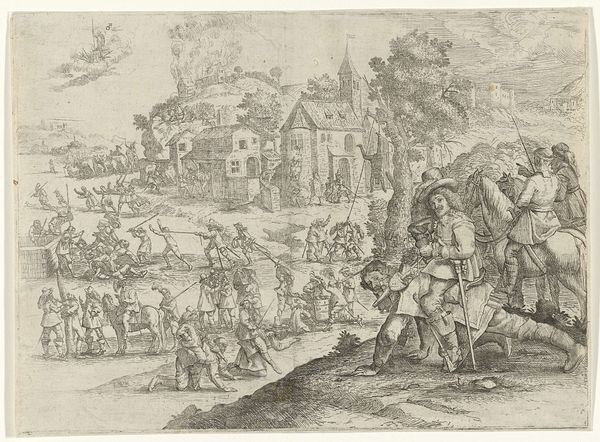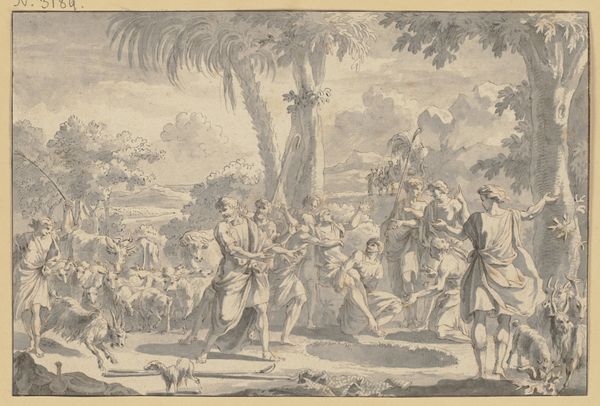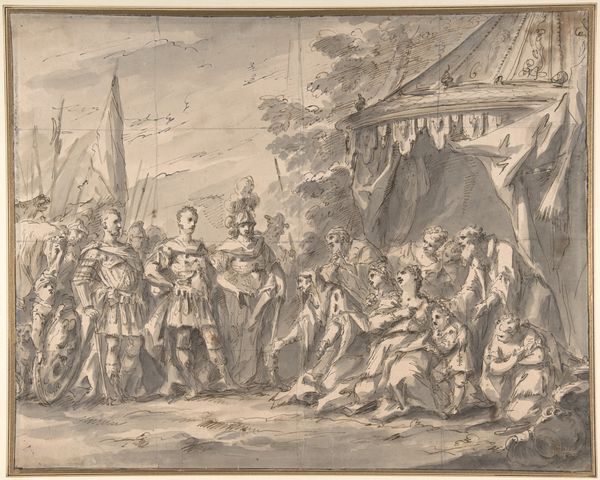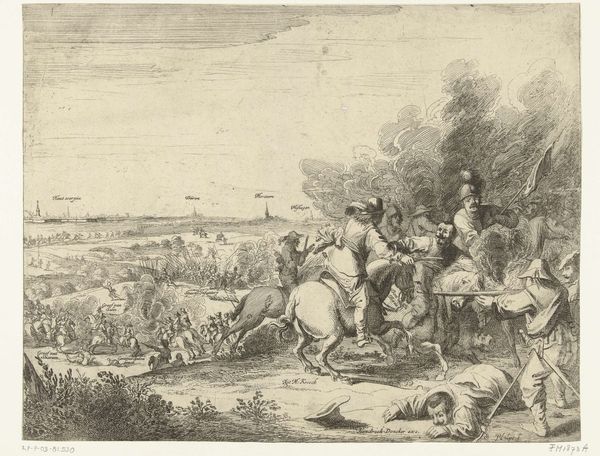
Ragotin declame des vers; des paysans croient qu'il preche 1737
0:00
0:00
drawing, pen
#
drawing
#
narrative-art
#
landscape
#
pen
#
genre-painting
#
watercolor
#
rococo
Dimensions: overall: 33 x 44.2 cm (13 x 17 3/8 in.)
Copyright: National Gallery of Art: CC0 1.0
Editor: This is Jean-Baptiste Oudry’s "Ragotin declame des vers; des paysans croient qu'il preche," a pen and watercolor drawing from 1737. I find the subdued palette quite striking. What structural elements do you consider most compelling in this drawing? Curator: Note the dynamic interplay between the clusters of figures, almost theatrical. Consider how the artist used the trees as framing devices, structuring the scene and directing our gaze. How do you interpret the relationship between the foreground and background in terms of spatial construction? Editor: I see what you mean. The background creates depth, but also highlights the actions in the foreground. It seems almost like the composition is staged to create tension between these separate planes. What is your take on how the figures and landscape interrelate? Curator: Observe the artist’s mastery of line. It’s almost calligraphic. The lines are not just descriptive, they articulate emotion, they create light and shadow. See how he uses the ink washes to modulate the forms? It gives the drawing a sculptural quality, despite the flatness of the medium. It would benefit us to analyze the contrast and repetition in this work, for example, how does the artist play with variations in light and dark. Editor: The more I look, the more I appreciate the layering of the washes and the subtle details within each plane. It’s much more complex than it first appeared! Curator: Indeed! By focusing on the formal elements, the careful observer discerns an internal architecture within the artwork. Such analysis unveils levels of intention previously invisible.
Comments
No comments
Be the first to comment and join the conversation on the ultimate creative platform.
